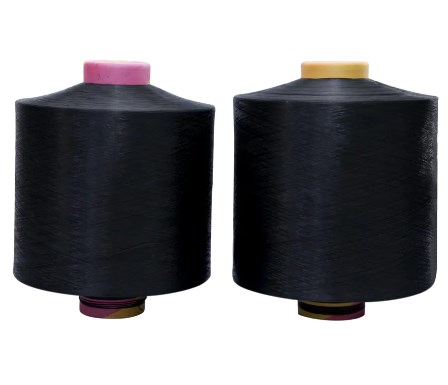Navy/Grey 150D/36F DTY Yarn 99.99% Polyester Anti-pilling Yarn for Sewing Materi...
See DetailsThe Concept and Characteristics of Polyester Color Yarn
In the textile industry, polyester color yarn, with its unique properties and wide application, has become a key direction in modern textile development. Compared to traditional white polyester yarn, colored yarn incorporates pigments during fiber production, enabling it to display a rich variety of colors during subsequent dyeing or weaving processes. Its core advantages lie in high color fastness and excellent color uniformity, while maintaining the inherent strength and abrasion resistance of polyester fiber. This provides a reliable raw material for high-end apparel, home textiles, and functional fabrics.
Colored polyester yarn not only offers visual advantages, but its production process also reflects the advanced state of modern textile technology. By adjusting the pigment type, fiber morphology, and process parameters, a variety of color schemes can be achieved, from soft solid colors to gradient colors and blended effects. This diversity meets the needs of designers and brands for personalized and high-value-added textiles and promotes innovation and development across the entire textile industry chain.
Polyester Color Yarn Production Process Analysis
The production of colored polyester yarn is primarily divided into two processes: pre-dye spinning and post-dye spinning. Pre-dyed spinning involves adding pigments or masterbatches to the molten polyester, directly spinning the resulting colored fibers. This process offers the advantage of color penetration into the fiber, resulting in uniform dyeing and high colorfastness, making it suitable for high-durability products. In contrast, post-dyeing dyeing occurs after the yarn or fabric is formed. The desired color effect is achieved by controlling the dye bath temperature, pH, and dyeing time. Different process choices directly impact the final yarn's appearance and performance, making process design and parameter optimization crucial during production.
Modern production also incorporates various modification technologies, such as UV protection, antistatic, and flame retardant treatments, to enhance the performance of colored polyester yarn in functional applications. By combining spinning technology with post-finishing processes, manufacturers can offer both aesthetically pleasing and durable products, enhancing their competitiveness.

Polyester Color Yarn Applications in Textiles
Polyester color yarn has a wide range of applications in textiles. It not only meets the color needs of traditional clothing but also plays an important role in home textiles, decorative fabrics, and functional outdoor fabrics. Colored yarns can be woven or knitted to create rich textures and patterns, giving the final product a more three-dimensional and vivid appearance. This characteristic provides more creative space for brand design while satisfying consumers' demand for color diversity and personalization.
Polyester color yarns are also expanding in functional applications. High-performance sportswear, outdoor equipment, and protective fabrics require high color stability, lightfastness, and abrasion resistance. Through scientific color matching and process control, colored polyester yarns ensure that the fabrics maintain excellent color effects and mechanical properties in various environments. This has earned them a significant position in the professional sports equipment, industrial fabrics, and high-end home textile markets.
Due to its high color fastness, diverse color expression, and excellent mechanical properties, polyester color yarns have become a key raw material in modern textile development. Whether for fashion apparel, home furnishings, or functional fabrics, colored polyester yarns play a key role in design innovation and product upgrades. With technological advancements and evolving market demands, colored polyester yarns will continue to lead color trends in the textile industry, driving the development of high-quality, multifunctional textiles.